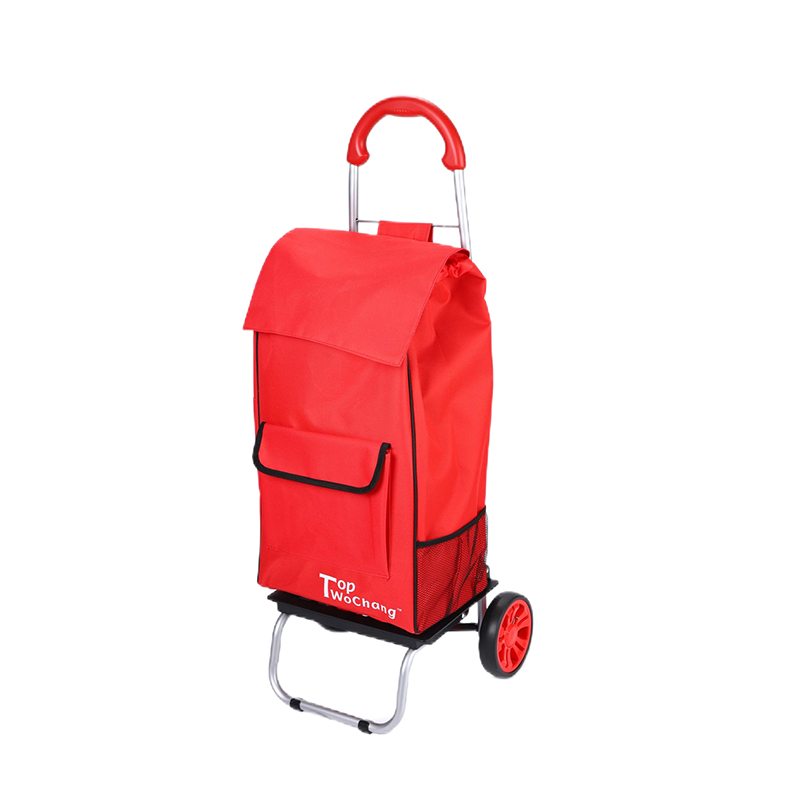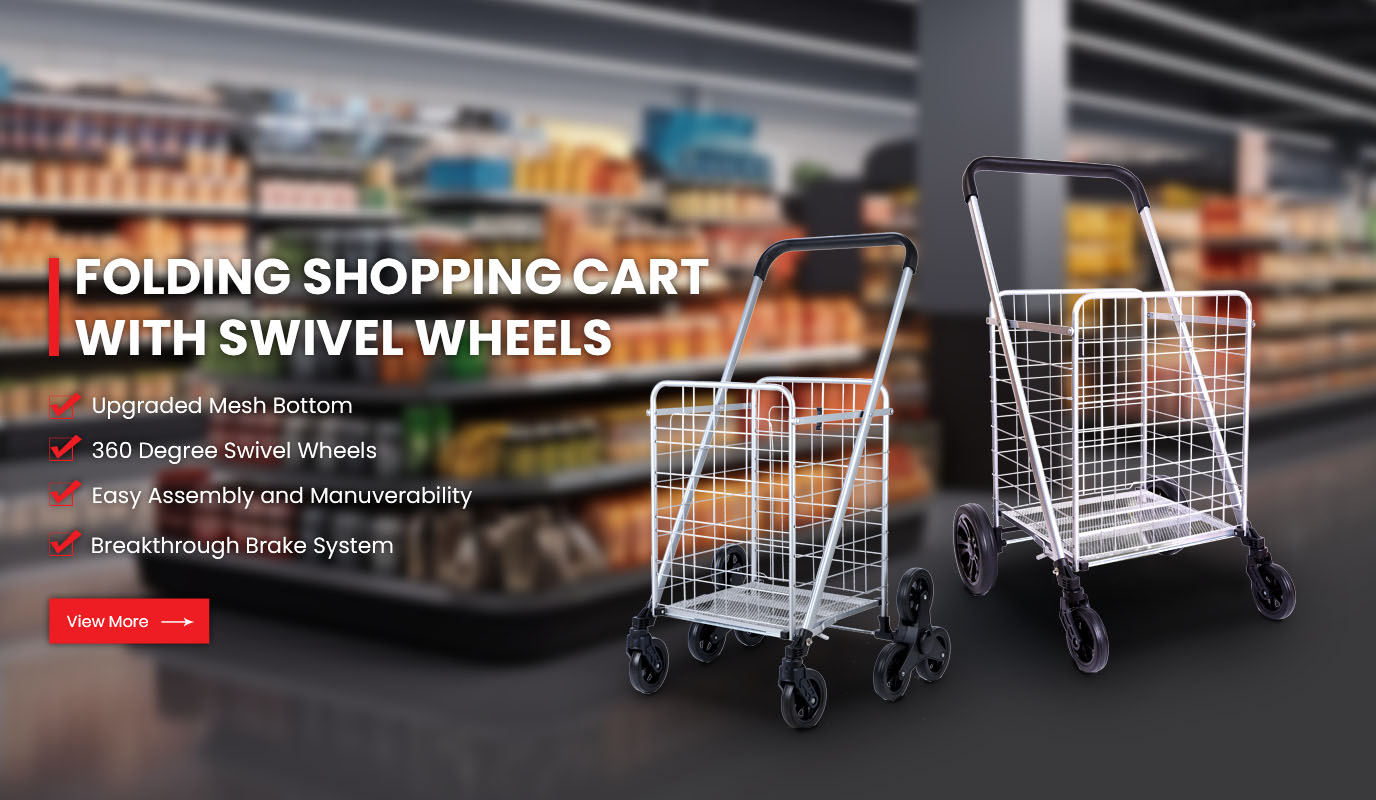Technical Feasibility Of Integrating Qr Code Payment And Navigation Functions in Shopping Carts
The rise of smart Shopping Carts: from tools to "shopping assistants"
Traditional shopping carts are undergoing a disruptive change. With the surge in consumer demand for convenience, personalization and touchless payment, smart shopping carts, especially folding shopping cart bags that integrate QR code payment and navigation functions, have become the core carrier of the digital transformation of the retail industry. According to ABI Research, the global smart shopping cart market size will exceed US$4.7 billion in 2025, of which the penetration rate of QR code payment and navigation functions will reach more than 60%.
Multiple driving forces:
Efficiency improvement: The average checkout queue in a traditional supermarket takes 7 minutes, while QR code payment can reduce the time to 10 seconds.
Experience upgrade: Indoor navigation helps consumers quickly locate products, and the average customer price increases by 15%-20%.
Data value: Shopping behavior data feeds back inventory management and precision marketing, and retailers increase their gross profit margin by 3%-5%.

Technical disassembly: How to embed QR code payment and navigation into shopping carts?
1. Scan code payment: from "cashier counter" to "fingertip payment"
Technical principle:
Hardware: The shopping cart handle is embedded with a barcode scanner, which supports one-dimensional code/two-dimensional code recognition and connects to the supermarket POS system via Bluetooth or Wi-Fi.
Software: The payment SDK integrates interfaces such as Alipay and Apple Pay, encrypts and transmits data to the bank gateway, and the transaction delay is less than 0.3 seconds.
Advantages:
Contactless payment: After consumers scan the barcode of the product, the shopping cart automatically generates a bill and automatically deducts the money when leaving the store.
Loss prevention and efficiency improvement: Unscanned products trigger the weight sensor alarm, and the damage rate is reduced by 40%.
2. Indoor navigation: from "blind search" to "precise shopping guide"
Technical principle:
Positioning technology: Based on UWB or Bluetooth beacons, the positioning accuracy is 10 cm.
Route planning: The AI algorithm plans the optimal route based on the shopping list and real-time traffic, reducing shopping time by 30%.
Hardware integration:
The shopping cart is equipped with a 6-inch touch screen, which displays navigation maps and promotional information in real time.
The battery life is up to 12 hours, and it supports wireless charging.
Intelligent upgrade path of Folding shopping cart bag
1. Structural design innovation
Modular electronic compartment: a detachable electronic module is built in the folding joint, and the power is automatically cut off when folded to save energy.
Flexible circuit: FPC is used to replace traditional cables, which can adapt to frequent bending and has a lifespan of more than 50,000 folds.
2. Material adaptability
Waterproof fabric: The outer layer uses 500D Oxford cloth + TPU coating, with a waterproof grade of IPX4 to protect the internal electronic components.
Lightweight skeleton: Aviation aluminum frame with carbon fiber connectors, bearing up to 50kg.
3. Cost control
Scaled cost reduction: With mass production of 100,000 units, the cost of a single intelligent transformation is reduced from US$80 to US$45.
SAAS model: The navigation system is charged by subscription, reducing the initial investment of retailers.
Technical challenges and solutions
1. Payment security
Risk: Wireless transmission data is easily intercepted, and forged scanning leads to fraudulent payment.
Solution: End-to-end encryption + dynamic token verification, fraud rate less than 0.001%.
2. Navigation accuracy and signal interference
Risk: Metal shelves and crowd density affect positioning signals.
Solution: Multi-sensor fusion, error compensation algorithm controls positioning deviation within 0.5 meters.
3. Battery life and energy consumption
Risk: High-frequency use leads to an average of 2 charging times per day, affecting operational efficiency.
Solution: Low-power chip + kinetic energy recovery wheel set, battery life extended to 18 hours.
Application scenarios and commercial value
1. Warehouse membership store: data-driven refined operation
The navigation system guides consumers through high-gross-profit commodity areas, and sales of related categories increased by 35%.
Thermal map analysis optimizes shelf layout, and the efficiency per square meter increased by 18%.
2. Outdoor market: subverting the traditional procurement model
The folding design is suitable for tent stalls, and the code scanning payment solves the problem of cash management. The market revenue increased by 25%.
Future Outlook: From Tools to "Entrance to Retail Ecosystem"
Functional Expansion: Integrated voice assistant, AR try-on, etc., the shopping cart becomes a "personal shopping guide".
Cross-scenario integration: Linked with smart home, automatically replenishing out-of-stock refrigerators, and opening the "no-sense repurchase" mode.
Standardized competition: The industry will form a unified communication protocol and data interface to reduce the cost of ecological access.
Smart shopping carts are no longer a concept - the technical maturity of scan code payment and navigation functions, and the engineering innovation of folding shopping cart bags are driving it from "laboratory" to "shelf". For retailers, this is not only an efficiency tool, but also a strategic fulcrum for reconstructing the relationship between people, goods and places; for consumers, a "pick up and go" retail revolution has arrived.



